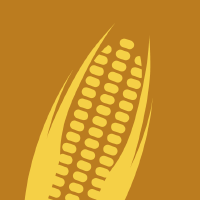Topic Editors


Abiotic Stress Responses in Wheat: Perspectives on Productivity and Sustainability
Topic Information
Dear Colleagues,
Abiotic stresses (drought, salinity, cold, heat, waterlogging, etc.) are the major factors negatively influencing crop development and productivity. They are the main causes of extensive agricultural production losses worldwide. Regarding abiotic stresses, drought, salinity, and extreme temperatures are the major environmental constraints that modern agriculture must cope with. It has been estimated that they may be responsible for a 50% or greater yield reduction in major crop plants. Wheat, as a major staple food, represents an important source of essential elements such as energy, proteins, vitamins, and minerals, among other beneficial compounds. Elucidating the tolerance mechanisms of abiotic stresses in wheat is critical in relieving the effects of these stresses on wheat production.
This Topic will be a collection of the latest research on the agronomical, physiological, and molecular aspects of abiotic stress tolerance in wheat, aiming to provide a comprehensive understanding of the associated mechanisms in wheat grown under unfavorable conditions and significantly improve the efficiency of wheat production. Original research articles, reviews, and short communications are welcome.
Prof. Dr. Wenshan Guo
Prof. Dr. Jinfeng Ding
Dr. Min Zhu
Topic Editors
Keywords
- abiotic stress
- wheat
- yield
- quality
- physiological mechanisms
Participating Journals
| Journal Name | Impact Factor | CiteScore | Launched Year | First Decision (median) | APC | |
|---|---|---|---|---|---|---|

Agronomy
|
3.7 | 5.2 | 2011 | 15.8 Days | CHF 2600 | Submit |

Crops
|
- | - | 2021 | 30.5 Days | CHF 1000 | Submit |

Plants
|
4.5 | 5.4 | 2012 | 15.3 Days | CHF 2700 | Submit |

MDPI Topics is cooperating with Preprints.org and has built a direct connection between MDPI journals and Preprints.org. Authors are encouraged to enjoy the benefits by posting a preprint at Preprints.org prior to publication:
- Immediately share your ideas ahead of publication and establish your research priority;
- Protect your idea from being stolen with this time-stamped preprint article;
- Enhance the exposure and impact of your research;
- Receive feedback from your peers in advance;
- Have it indexed in Web of Science (Preprint Citation Index), Google Scholar, Crossref, SHARE, PrePubMed, Scilit and Europe PMC.


